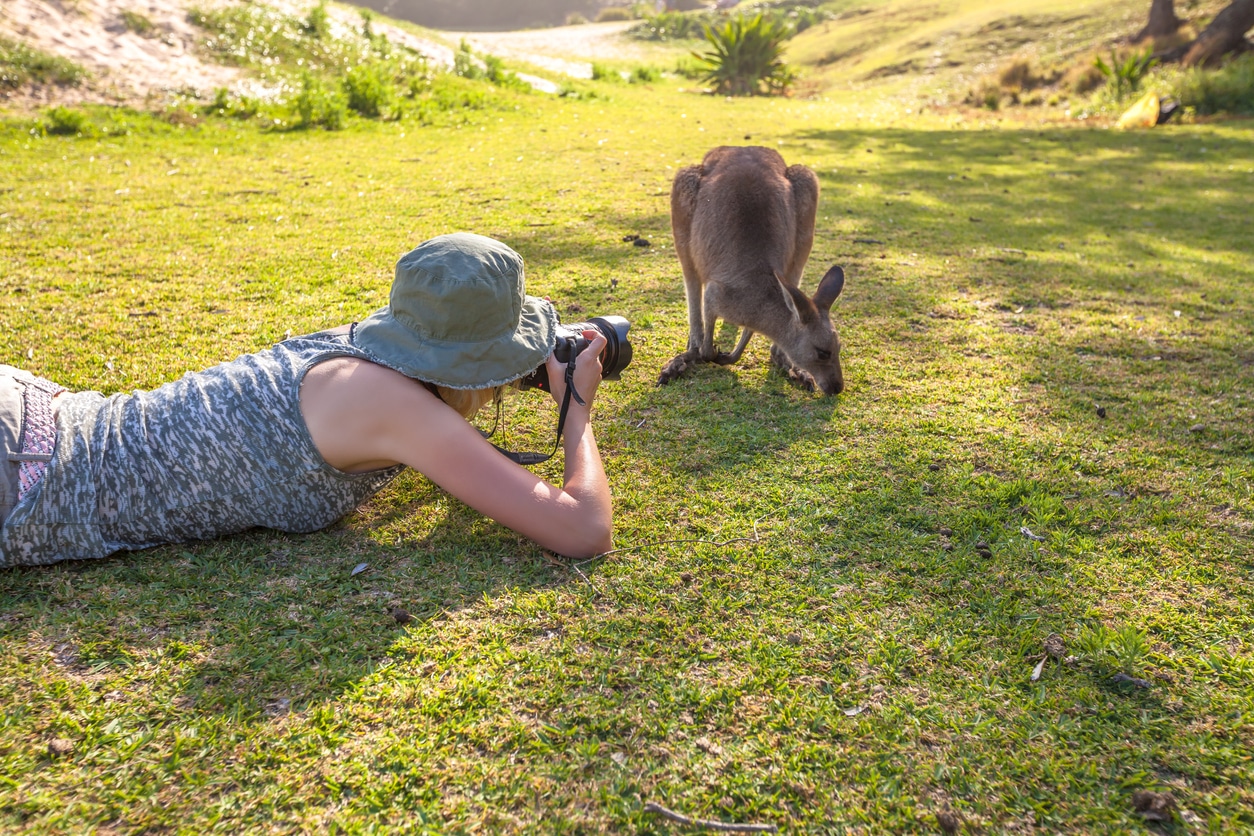Making the leap from the U.S. to Australia or vice versa is a life-changing decision. Whether you’re a U.S. expat considering a move, or simply curious about living in Australia vs America, this guide will walk you through the key differences and similarities. We’ll break down everything from cost of living and housing to work culture, healthcare, and education, so you can make informed choices with confidence and clarity.
Overall cost of living comparison between Australia and America
When weighing life in Australia vs America, the overall cost of living is often top of mind. Both countries offer high standards of living, but the price tags can vary depending on where you settle.
Australia is known for its relatively high cost of living, especially in major cities like Sydney and Melbourne. Groceries, dining out, and utilities tend to be more expensive than in many parts of the U.S. However, Australia’s minimum wage is among the highest in the world, which helps offset some of these costs for residents.
America offers a broader range of living costs, largely due to its size and diversity. While cities like New York and San Francisco rival Sydney in expense, many U.S. cities and rural areas are significantly more affordable. Everyday expenses such as gasoline, clothing, and some groceries are often cheaper in the U.S.
Example: A cup of coffee in Sydney might cost AUD $4.50 (about USD $3), while in New York, you might pay around USD $2.50–$3.50. Rent, transportation, and healthcare can also differ dramatically, as we’ll explore in the sections below.
Housing costs and rental market differences
Housing is a major factor when comparing life in Australia vs. the U.S. Let’s look at how the two countries compare:
Australia
- Major cities: Sydney and Melbourne are among the world’s most expensive rental markets. A one-bedroom apartment in central Sydney can easily exceed AUD $2,500 (USD $1,650) per month.
- Regional areas: Smaller cities and regional towns offer more affordable options, but prices have risen in recent years due to demand and limited supply.
- Rental process: Leases are typically 6 or 12 months, and tenants often pay a bond (security deposit) equal to 4 weeks’ rent.
America
- Major cities: New York, San Francisco, and Los Angeles have high rents, with one-bedroom apartments in central areas often costing USD $2,500–$4,000 per month.
- Suburbs and smaller cities: The U.S. offers a wide range of affordable housing, especially outside major metropolitan areas. Homeownership is more common, and mortgage rates can be favorable.
- Rental process: Leases are usually 12 months, with security deposits varying by state.
💡 Pro Tip:
If you’re moving to Australia, be prepared for competitive rental markets in big cities and consider exploring regional areas for better value.
Daily expenses: groceries, transportation, and utilities
Everyday costs can add up quickly, so understanding the differences in daily expenses is crucial when comparing.
Groceries
- Australia: Groceries are generally more expensive, partly due to import costs and a smaller domestic market. For example, a loaf of bread might cost AUD $3.50 (USD $2.30), and fresh produce can be pricier, especially out of season.
- America: Larger-scale agriculture and competition keep grocery prices lower. Supermarkets like Walmart and Costco offer significant savings.
Transportation
- Australia: Public transport is reliable in major cities, but can be costly—monthly passes range from AUD $120–$200 (USD $80–$130). Owning a car is common in regional areas, but fuel prices are higher than in the U.S.
- America: Public transport varies widely; it’s excellent in some cities, limited in others. Gasoline is generally cheaper, and car ownership is often essential outside urban centers.
Utilities
- Australia: Electricity and water bills are higher on average, especially in older homes. The Internet is reliable but can be more expensive and slower than in the U.S.
- America: Utility costs vary by region, but competition often keeps prices lower. High-speed internet is widely available and typically less expensive.
💡 Pro Tip:
Budgeting for higher daily expenses in Australia is wise, especially if you’re used to U.S. prices. Shopping at local markets and using public transport can help manage costs.
Work-life balance and employment culture differences
The work environment is a key part of the Aussie experience, and the two countries have distinct approaches to work-life balance.
Australia
- Work-life balance: Australians value time off and personal well-being. The standard workweek is 38 hours, and full-time permanent employees are entitled to at least 4 weeks of paid annual leave.
- Work culture: The atmosphere is generally relaxed and egalitarian. Hierarchies exist, but open communication is encouraged. Overtime is less common, and there’s a strong emphasis on enjoying life outside work.
America
- Work-life balance: The U.S. is known for its fast-paced, achievement-oriented culture. The standard workweek is 40 hours, but many professionals work longer hours. Paid leave is not mandated federally, and vacation time is often limited to 2 weeks per year.
- Work culture: There’s a focus on productivity, ambition, and individual achievement. Hierarchies can be more pronounced, and networking is a key part of career advancement.
💡 Pro Tip:
If you’re moving from the U.S. to Australia, you may find the slower pace and generous leave policies refreshing. Conversely, Americans may need to adjust to a more relaxed approach to work.
Social culture and lifestyle: relaxed vs fast-paced living
Social life and lifestyle are at the heart of the living in Australia vs America conversation. Here’s what you can expect:
Australia
- Lifestyle: Australians are known for their laid-back, outdoorsy approach to life. Beach culture, barbecues, and sports are central to socializing. There’s a strong sense of community and inclusivity.
- Socializing: Pubs, cafes, and parks are popular gathering spots. Work and social life are often kept separate, and there’s less pressure to “hustle” outside of work hours.
America
- Lifestyle: The U.S. is diverse, with lifestyles ranging from urban hustle to rural tranquility. In major cities, life can feel fast-paced and competitive. Socializing often revolves around work, networking, and organized activities.
- Socializing: Bars, restaurants, and sporting events are common venues. There’s a strong culture of volunteering and community involvement, but work commitments can sometimes take precedence.
Many expats find Australia’s relaxed lifestyle a welcome change, while others miss the energy and variety of American cities. Your experience will depend on your personal preferences and where you choose to live.
Healthcare systems and public services comparison
Healthcare is a major consideration when comparing life in the two countries, especially for families and retirees.
Australia
- Healthcare system: Australia offers universal healthcare through Medicare, funded by taxes. Most essential medical services are free or low-cost for residents and citizens. Private health insurance is available for additional coverage and faster access to specialists.
- Public services: High-quality public transport, parks, and community facilities are widely available.
America
- Healthcare system: The U.S. relies on a private healthcare system, with insurance often tied to employment. Costs can be high, and coverage varies. Public programs like Medicare and Medicaid exist, but eligibility is limited.
- Public services: Quality and availability of public services vary by state and city. Public transport is less comprehensive, but parks and libraries are generally well-maintained.
💡 Pro Tip:
Australia’s universal healthcare system offers peace of mind, but U.S. expats should ensure they understand eligibility and consider private insurance if needed.
Education costs and university fees breakdown
Education is another important factor when choosing whether to live in Australia or America, especially for families and students.
Australia
- Primary and secondary education: Public schools are free for residents, but international students and temporary visa holders may pay fees. Private schools are available at a cost.
- University fees: Higher education is not free, but government-subsidized loans (HECS-HELP) are available for citizens and permanent residents. International students pay higher tuition, often starting from AUD $20,000–$45,000 (USD $13,000–$30,000) per year.
America
- Primary and secondary education: Public schools are free for residents, funded by local taxes. Private schools can be expensive, with tuition ranging widely.
- University fees: U.S. college tuition is among the highest globally, with annual costs ranging from USD $10,000 (public, in-state) to $50,000+ (private). Financial aid and scholarships are available, but student debt is a common concern.
💡 Pro Tip:
If you’re moving with children, research local school options and potential fees. For university-bound students, compare tuition and scholarship opportunities in both countries.
Ready to make your move? Get expert tax help for your transition
Navigating the differences between living in Australia vs America is exciting but it can also be overwhelming, especially when it comes to taxes and financial planning. Our team of expat tax experts is here to guide you every step of the way, ensuring you stay compliant and make the most of your new adventure.
Frequently Asked Questions
-
Is it cheaper to live in Australia or America?
It depends on where you’re comparing. Major U.S. cities like New York or San Francisco are typically more expensive than Sydney or Melbourne, but overall living costs—especially groceries and housing—can be higher in Australia due to import prices and taxes.
-
How do salaries compare between Australia and the U.S.?
Salaries in the U.S. can be higher for certain industries like tech and finance, but Australia balances this with stronger worker protections, paid time off, and universal healthcare—so take-home quality of life often evens out.
-
What are the biggest cultural differences between living in Australia vs America?
Australians tend to prize work-life balance, informal communication, and “fair go” equality, while Americans are often more career-driven and individualistic. You’ll also notice fewer 24-hour conveniences Down Under—but far more long weekends at the beach.
-
Is healthcare better in Australia or the U.S.?
Australia’s public healthcare system (Medicare) provides universal coverage with low out-of-pocket costs. In contrast, U.S. healthcare is largely private, meaning quality can be high but costs vary widely depending on insurance coverage.
-
Can U.S. citizens easily move to Australia?
Yes—with the right visa. Popular options include skilled worker visas, student visas, or employer-sponsored migration. Many Americans qualify based on work experience, education, or a job offer in Australia.
-
Do I still pay U.S. taxes if I move to Australia?
Yes. U.S. citizens must report worldwide income to the IRS even while living abroad. However, tax benefits like the Foreign Earned Income Exclusion and the U.S.–Australia tax treaty help prevent double taxation.

 Connect on LinkedIn
Connect on LinkedIn

